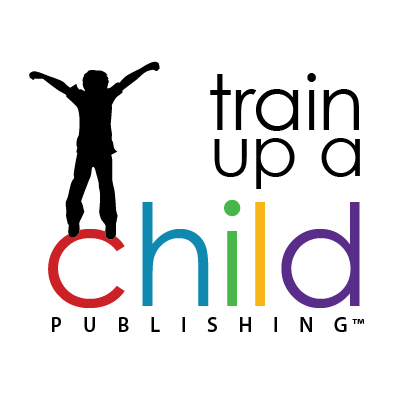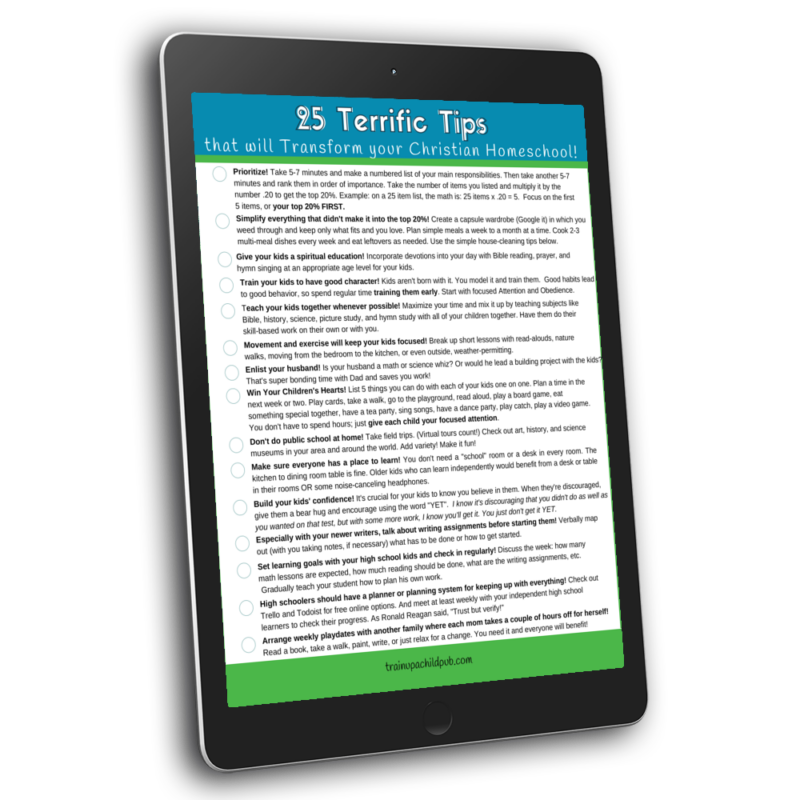Preparing Your Middle School child for High School – Part 2: Taking Advantage of the Intellectual Growth Curve
This article is the second in a series, Preparing Your Middle School Child for High School. All three of these articles help you see beyond the day-to-day shenanigans of your middle school child, to the person your child is becoming.
In our first article you read about teaching your middle school child to work independently.
You learned how important it is to teach your middle school children that they are responsible for their schoolwork. That they are there to learn (not just finish their assignments). And that the purpose of mastery learning is to prepare them for the next step in their educational journey—high school.
Moving from an instructor to a coach/mentor.
Additionally, as a parent, your job is to coach and mentor them in order to ultimately help them develop into the people God has created them to be. In other words, you want to move out of the role of telling them what to do and into the role of coming beside them. Being their mentor and cheerleader.
In this article, I’m sharing about a student’s developmental changes during the middle school years. Also, I’m talking teaching methods and types of curriculum to maximize learning during this period. The goal is here to prepare your middle school child to excell in high school.

Preparing your middle school child for high school involves moving from teaching isolated facts to helping them see connections.
Fortunately, as your student begins to move into the middle school years (or logic stage, if you have a classical bent) she is capable of more than just learning facts in isolation. As she reaches this stage, she is better able to reason why something occurred, make connections between events, and see the consequences of someone’s actions.
In other words, she is beginning to think more analytically. Our goal as teachers is to recognize this developmental stage when it arrives and encourage this higher level thinking by the way we teach and the curriculum materials we use.
Heralding this developmental stage is often a surge of questioning combined with what often sounds like a hint of criticism. Students who learned years ago to obey promptly without questioning are now asking, “Why do we have to do things this way?”
This can be a bit unsettling to parents who have anticipated those ‘teen years’ with dread. You’ll be glad to hear that this is normal and natural.
They are questioning, in part, at least, because their reasoning ability is increasing, and this is just what we want to encourage. Be cautious not to fall for the false worldview that disrespectful behavior during this period is “normal, and just a stage” that will be suddenly outgrown. How you respond to your student during this time will determine the type of relationship you will have in those sometimes challenging high school years.
Questioning is healthy, disrespect is not.
In fact, homeschooling high school might actually be some of your favorite homeschooling years!
The content of what they are learning is important, of course, but so is the way you teach it.
One of the most effective ways to promote higher level thinking is through dialogue. Help prepare your middle school child for high school by teaching them to think about the information they are learning and connect it to something else they have already learned.
Ask questions to remind them of what they already know about a subject and encourage them to list things they don’t know but would like to learn about it. Read about how to use a KLW chart to do this here.
As home educating moms, encourage your middle school children to generate their own questions and research the answers. But, you ask, what do I say? How do I encourage this kind of dialogue? First, when learning about anything, teach your students to answer the ‘basic’ questions: who, what, when, where, why and how.
Once that foundation of knowledge is laid, move to the higher level questions. Here are some ideas to get you started.
Preparing your middle school child for high school means higher level discussion and writing:
Use the following questions and statements as discussion or writing prompts.
When studying a person, discuss or use the following as writing prompts:
After reading a book, discuss or use the following as writing prompts:
*This is the age to begin teaching discernment. It is time for your student to learn that authors write from their own worldview, which may or may not be the one to which you and your student subscribe. Regularly discuss authors’ worldviews as they apply to movies, books, television shows, etc. Science books often have a few obvious sentences that pertain to evolutionary thought—help your students learn to pick up on that and teach them to be like the Bereans, who “examined the Scriptures every day to see if what Paul said was true.” (Acts 17:11) Introduce this practice during middle school and continue it throughout high school. (At that time, we recommend more formal worldview studies.)
Click here for many more writing prompts.

What if my middle school student is not interested in these types of discussions?
1. Your younger middle school student may not be developmentally ready for them.
2. Try easing your student into them by beginning with a question or two here and there rather than expecting lengthy discussions.
3. Realize that some students are naturally more verbal than others, but articulating one’s thoughts is good practice for everyone. So require it from all of your students, taking into consideration their natural giftings and current abilities.
4. Remember that during the middle school years, besides some increasing mental ability, your students are experiencing a myriad of physical and emotional changes that take a toll on ability to focus on school. Be patient.
Many parents have found (myself included) that increased physical activity can be most helpful to resistant sons, particularly, at this age. I frequently sent mine to run around the house a few times during these years. 😉
5. Parents who use narration as an evaluation technique in the elementary years usually find that their students are more verbally responsive in later grades.
Vary Teaching Methods and Materials during middle school
Public and private instruction and curriculum often cater to auditory and linear learners.
But not only are there PLENTY of us who learn differently, educational research shows that the more learning modalities that you use, the better most of us learn.
An ancient Chinese proverb sums up this concept:
“I hear and I forget; I see and I remember; I do and I understand.”
As homeschoolers, we are in an ideal position: we can identify our students’ learning styles, we can choose curriculum and teaching methods that match, and we can offer curriculum that utilizes a number of learning modalities to maximize learning.
Take advantage of this blessing!
Our teaching style and materials should promote active learning. By middle school, it is time to move away from fill in the blank answers, worksheets and ‘textbook sound bites.’ It is time to more deeply explore a subject.
For example, rather than a summary chapter about World War I, have your middle school student read an historical novel about it. This will immerse your student in the culture of the time period as s/he relates to a character who “lived” through those events.
In your discussions, help your middle school child identify what lead up to WWI and how the world changed as a result. After studying World War II, compare and contrast the two wars, using other higher level thinking skills.
(Note that your student is just developing these reasoning abilities, so you are guiding discussions at the middle school age, rather than asking for well written essays!)
In addition to encouraging higher level thinking through dialogue, your middle school student will also benefit by your inclusion of other activities in her schooling. This is not the time to discontinue activity-based learning because your student is getting older and so school now needs to be more ‘serious’.
Curriculum that includes activities in addition to reading and writing will meet the needs of kinesthetic and auditory learners, as well as provide all students with opportunities to analyze and synthesize, two advanced learning skills.
Student activities that emphasize these skills include:
Look for middle school curriculum that includes hands on assignments and varied learning experiences.
Curriculum that provides for these varied learning experiences will reach and engage students more than traditional textbook curriculum! You’re kids will retain much more by active learning than by memorizing facts.
Recognizing the dramatic physiological and mental changes of your middle school student requires you to modify your teaching strategies and curriculum choices to keep up with their increasing intellectual abilities.
Take the time to talk with your middle school students to encourage higher level thinking. Regularly asing them to talk about what they are learning will increase their communications skills and their writing abilities.
Encourage your middle school students to develop their own questions and research the answers to yield high dividends in your students’ ownership of their own learning.
As well, providing curriculum that offers experiential and auditory learning options will pay off in engagement and increased retention. All of these factors will help lay a promising foundation for high school studies.
Are you teaching, or going to be teaching a middle school student? What could you use from this post that would help you in preparing your middle school child for high school?
********************
Read my third post in this series called 12 Surefire Ways to Prepare Your Middle School Student for High School.


A postscript: I know not all middle school-aged kids are going to fit neatly into the pattern I’m suggesting in this post! So if yours don’t, please don’t get discouraged. As parents, our goal to raise godly generations consists of training students to be responsible for their own learning. As we all know, some children take more training than others! We encourage you not to give up, for your high school and succeeding years will be easier as a result. The higher path here means more training time and sometimes different curriculum choices – but the results are well worth the effort. In Him, Dana